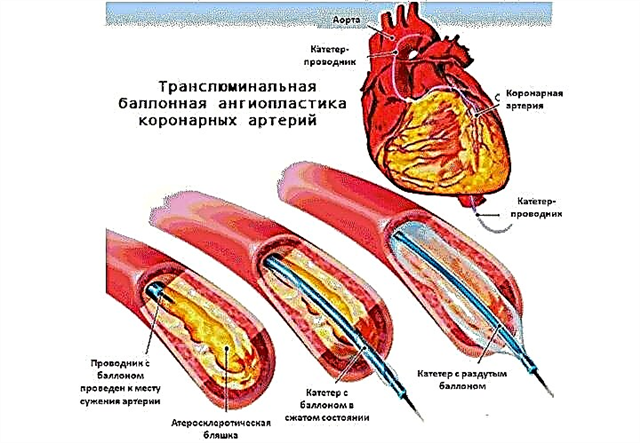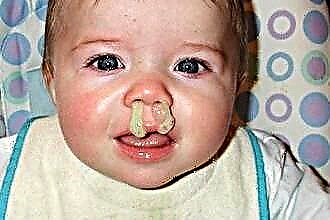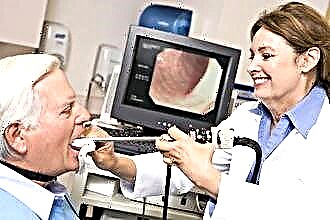One of the most common ear problems is tubo-otitis, an inflammation of the auditory tube. And although it rarely occurs on its own, according to the international classification of diseases ICD-10, tubo-otitis is isolated as a separate disease, and it is assigned the number H68.0. There are many reasons for it - from improper and irregular ear care to exposure to pathogenic microorganisms. With timely treatment started, it passes quickly without causing complications.
Causes of the disease
 The eustachian tube is a small, narrow canal that connects the nasopharynx to the middle ear. It helps maintain equal pressure on both sides of the eardrum. The width of the auditory canal in an adult is no more than 2 mm, therefore, even with minimal swelling, it almost completely overlaps. This creates a pressure differential that causes constant additional tension and inflammation of the tympanic membrane.
The eustachian tube is a small, narrow canal that connects the nasopharynx to the middle ear. It helps maintain equal pressure on both sides of the eardrum. The width of the auditory canal in an adult is no more than 2 mm, therefore, even with minimal swelling, it almost completely overlaps. This creates a pressure differential that causes constant additional tension and inflammation of the tympanic membrane.
The causes of tubo-otitis are quite diverse. Inflammation of the auditory tube is most often a complication after previous diseases of the upper respiratory tract: ARVI, flu, tonsillitis, etc. Viruses and bacteria through the nasopharynx penetrate the mucous lining of the Eustachian tube and cause inflammation. If untreated, it goes on, affecting the entire tympanic cavity.
Other reasons that can trigger acute otitis media are:
- systemic diseases such as measles, chickenpox, tuberculosis;
- severe allergic reactions accompanied by edema;
- curvature of the nasal septum, congenital or acquired;
- enlarged adenoids, polyps, and other skin lesions.
In the absence of adequate treatment, chronic tubo-otitis develops, which causes a thickening of the tympanic membrane and a decrease in its elasticity. As a result, hearing deteriorates and deafness develops.

Symptoms of the disease
 Even acute eustachitis does not have clear-cut symptoms by which it can be unequivocally diagnosed. The clinical picture is rather blurred, especially since in most cases, tubo-otitis is a concomitant disease, and not the main one. Typically, patients come with complaints such as:
Even acute eustachitis does not have clear-cut symptoms by which it can be unequivocally diagnosed. The clinical picture is rather blurred, especially since in most cases, tubo-otitis is a concomitant disease, and not the main one. Typically, patients come with complaints such as:
- sudden hearing loss;
- feeling of congestion;
- autophony (amplification of your own voice);
- a feeling of overflowing fluid in the ear;
- recurrent dizziness;
- noise or ringing in the ears.
In the acute course of the disease, an increase in body temperature, nausea, and severe ear pains are possible. On external examination of the ear, redness and protrusion of the tympanic membrane are noticeable, there may be yellowish discharge from the ear.
According to the intensity of the course of the disease, tubo-otitis is acute and chronic, and according to its location: right-sided, left-sided and bilateral. Bilateral eustachitis develops gradually, when, with improper treatment or its absence, inflammation passes from one ear to the other.
Treatment methods
 Since in most cases Eustachitis is a concomitant disease, first of all, treatment should be directed to the causes that provoked the inflammatory process. With the infectious nature of the disease, it is necessary to use antibacterial drugs, often in combination with anti-inflammatory and antipyretic drugs.
Since in most cases Eustachitis is a concomitant disease, first of all, treatment should be directed to the causes that provoked the inflammatory process. With the infectious nature of the disease, it is necessary to use antibacterial drugs, often in combination with anti-inflammatory and antipyretic drugs.
A good effect is given by the use of vasoconstrictor nasal drops, which perfectly relieve puffiness. If the edema of the auditory tube is the result of an allergic reaction, it is advisable to take antihistamines. After the exacerbation has passed, you can connect physiotherapy treatment: ultrasound, electrophoresis, ultraviolet radiation.
In severe cases, tubo-otitis becomes a purulent inflammation of the middle ear. The pus collects behind the eardrum and begins to press on it, causing severe pain. To prevent it from ruptured, your doctor may suggest making a puncture through which pus flows out. This helps to quickly relieve pain and speed up the healing process. The puncture heals within a few days and does not impair hearing.
At an early stage, in agreement with the doctor, you can use alternative methods of treatment:
- burying the ears with alcoholic tinctures of herbs: eucalyptus, celandine, etc.;
- warming up the ear with a blue lamp or solux;
- paraffin therapy or warming mud compresses;
- onion or garlic instillations (turundas);
- using aloe juice or pulp.
Knowing what tubo-otitis is, it is very important to complete the treatment. Otherwise, it can lead to serious complications: inflammation of the meninges, rupture of the eardrum, and even general blood poisoning (sepsis).
If you stop taking antibiotics prematurely, the disease may temporarily subside with its subsequent transition to a chronic form.
 To prevent the development of tubo-otitis, you must:
To prevent the development of tubo-otitis, you must:
- regularly and properly take care of your ears;
- do not use cotton swabs to clean them;
- prevent them from hypothermia, beware of drafts;
- wear a hat in cold and damp weather;
- after bathing, be sure to remove the water with a cotton swab;
- with a runny nose, clear the nostrils one by one, and not simultaneously.
If, after suffering diseases of the upper respiratory tract, one or more of the above symptoms appear, for which you can suspect tubo-otitis, you should not delay the visit to the doctor. Early treatment will avoid complications and prevent otitis media.



